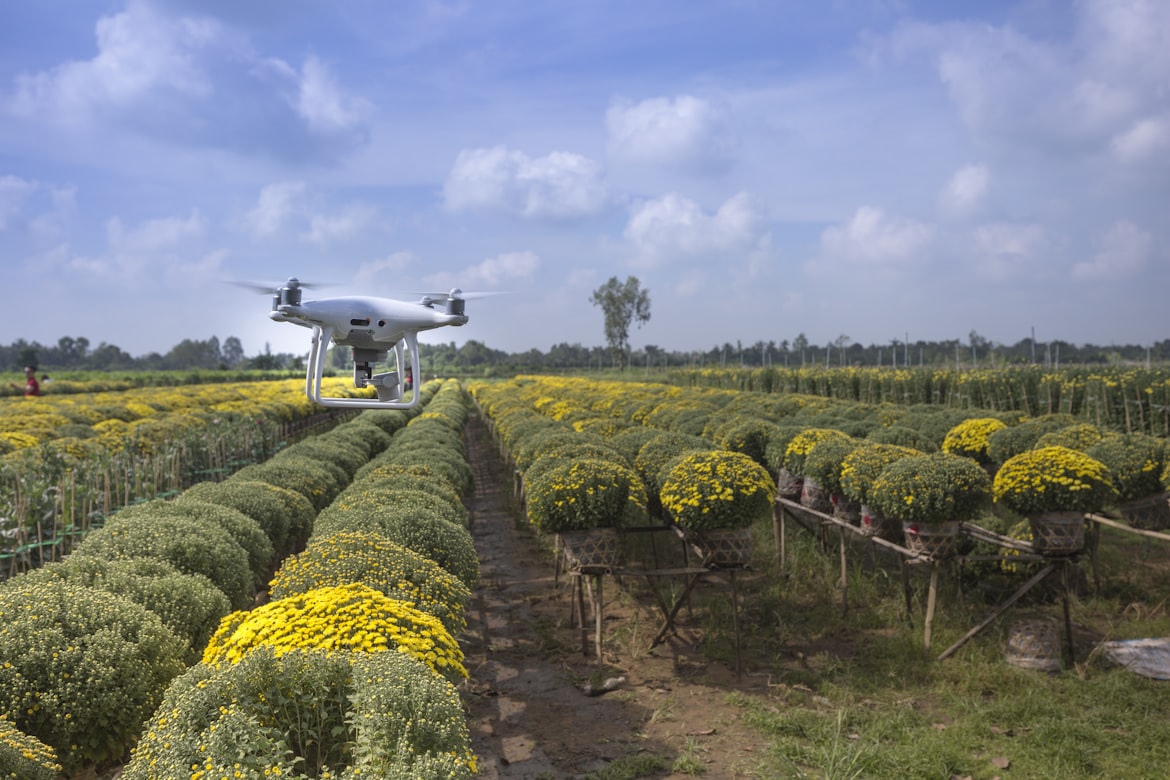Farming's future depends on algorithms, sensors, and data rather than tractors and fertilizer. As artificial intelligence (AI) has become more prevalent in agriculture, farmers are now using data to inform their decisions, which saves money, time, and resources while increasing food production.
AI is assisting in the transformation of conventional farming into smart farming, which is altering the way that food is produced worldwide, by predicting weather patterns and early crop disease detection.
 |
| AI drones in farming |
What is AI in Agriculture?
AI in agriculture makes use of cutting-edge technologies such as
- Computer vision (for soil and crop analysis),
- Machine learning (to forecast pest risks and yields), and
- Tools for automation (for planting, watering, or harvesting crops).
Throughout the whole farming cycle, these technologies help farmers make decisions that are quicker, more intelligent, and more effective.
Real-World Applications of AI in Agriculture
1. Crop Monitoring Using AI and Drones
Drones with AI capabilities fly over fields and take sharp pictures. AI systems analyze these photos to identify:
- Health of crops
- Stress from water
- An infestation of pests
2. Precision & Soil Health Farming
AI determines precisely where and how much to plant by analyzing soil quality and moisture levels. Teralytic and Plantix are two tools that help farmers increase productivity and reduce waste.
3. Forecasting Yield
Based on soil, weather, and past data, machine learning models can forecast how much crop will grow in a given season. This aids farmers in better pricing and storage planning.
4. Farming machines that operate automatically
AI-based tractors and seeders are used by companies like Blue River Technology and John Deere to plant seeds, apply pesticides, and harvest crops without the need for human assistance.
Benefits of AI in Farming
- Increased Yields: More food results from wiser choices.
- Cost Efficiency: Less fertilizer or pesticide is used needlessly.
- Real-Time Insights: Use drones and apps to monitor crops around-the-clock.
- Early Disease Detection: Prevents significant crop loss.
- Eco-friendly: Encourages environmentally friendly agricultural methods.
Studies such as this McKinsey article show that AI can improve farm output by optimizing resource usage.
Challenges in Smart Farming
Problems with Data Collection: Small farmers might not have the funds for sensors and drones.
Connectivity Issues: A lot of rural areas don't have reliable internet for AI tools.
AI Training Needs: Farmers need to be trained in the correct use of these technologies.
FAQ
Q: What is smart farming, please?
A: To increase farming productivity and crop quality, smart farming makes use of AI, drones, sensors, and automation.
Q: What role do drones play in farming?
A: They help farmers address issues before crops are harmed by scanning fields for issues like pests or dryness.
Q: Is AI farming costly?
A: While some tools are expensive, drone services and apps are getting cheaper over time.


Comments